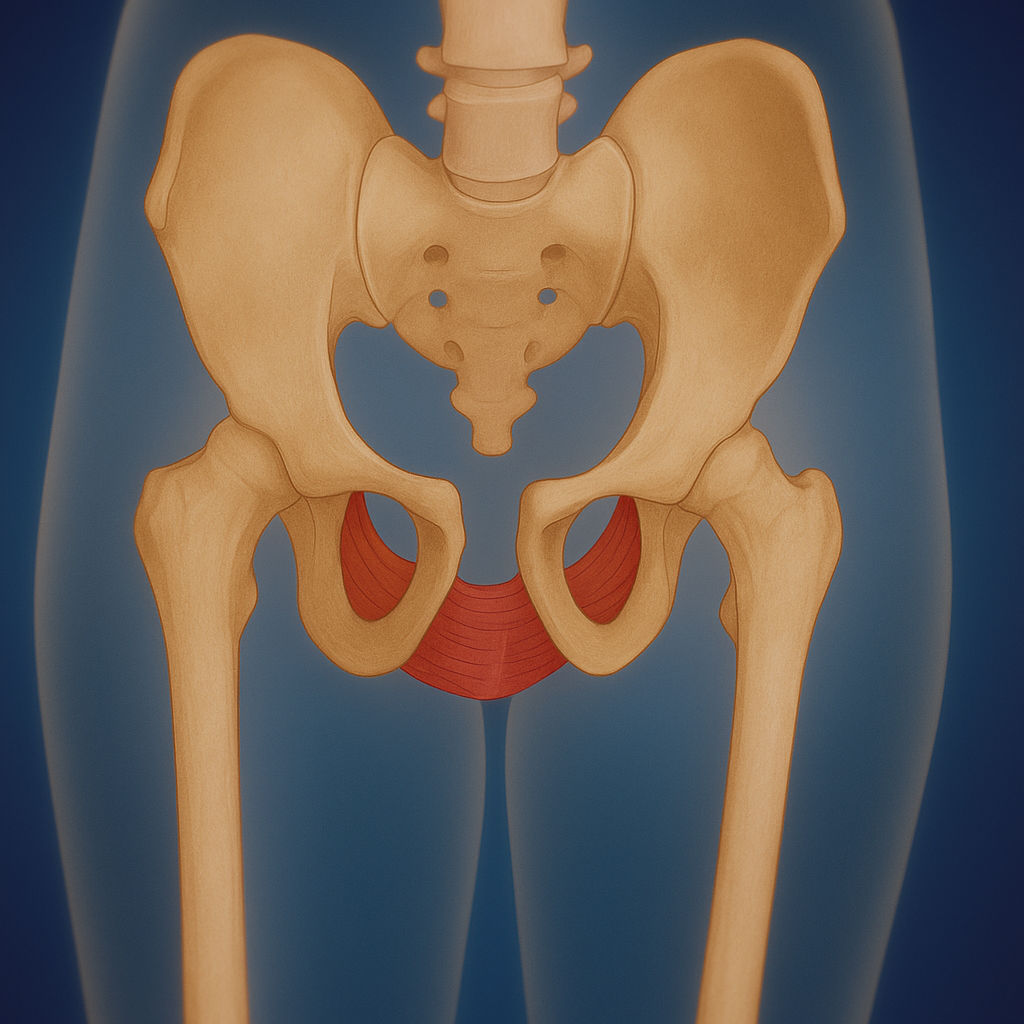
Pelvic Floor Dysfunction ICD 10
What You Need to Know
If you’ve been searching for information about pelvic floor dysfunction and its ICD-10 codes, you’re likely trying to understand this common yet often misunderstood condition.
The pelvic floor refers to a group of muscles and connective tissues at the base of the pelvis that are responsible for supporting critical organs such as the bladder, bowel, and uterus (in women).
Pelvic floor dysfunction (PFD) occurs when these muscles fail to function properly, leading to issues like incontinence, pain, and other symptoms that can disrupt daily life.
Recognizing the causes, symptoms, and available solutions can help you take steps to address and manage this condition effectively.
In the ICD-10 coding system, pelvic floor dysfunction is not represented by a single, specific code but is instead categorized under various codes that correspond to specific manifestations or related conditions.
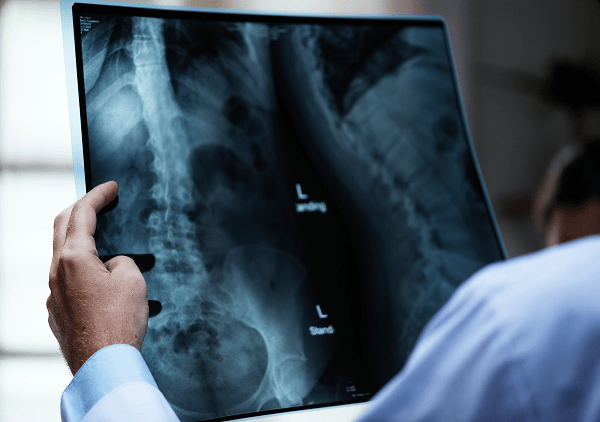
In the ICD-10 coding system, pelvic floor dysfunction is not represented by a single, specific code but is instead categorized under various codes that correspond to specific manifestations or related conditions.
Some examples of pertinent ICD-10 codes include:
M99.05: Segmental and somatic dysfunction of pelvic region. This code is used to describe biomechanical lesions or somatic dysfunctions specific to the pelvic area.
N81.84: Pelvic muscle wasting. This code applies to conditions involving disuse atrophy of pelvic muscles and the anal sphincter.
N81.89: Other female genital prolapse. This code encompasses various types of pelvic organ prolapse not specified elsewhere, including pelvic floor or perineal prolapse.
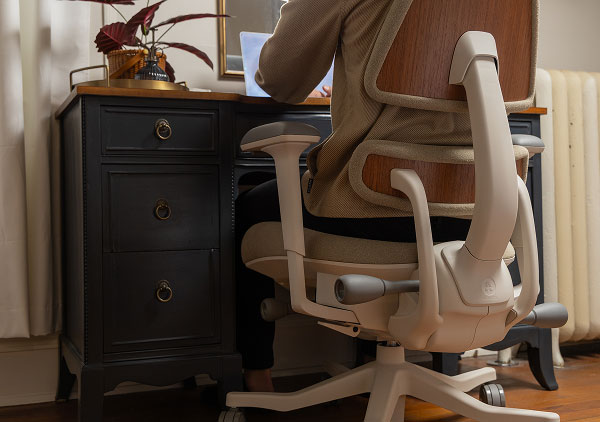
Pelvic floor dysfunction (PFD) occurs when these groups of muscles at the base of the pelvis don't work as they should.
Instead of contracting and relaxing in coordination, they might remain too tight, too weak, or lack control. This dysfunction can lead to a variety of symptoms, including:
- Urinary incontinence or urgency
- Constipation or difficulty with bowel movements
- Pain during intercourse or pelvic pain
- Lower back pain or a sensation of heaviness in the pelvic region
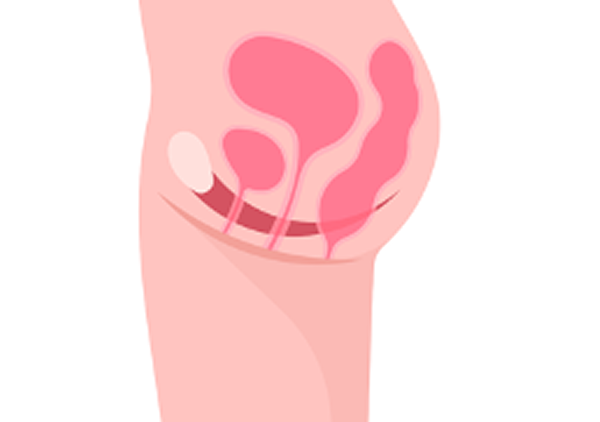
How Common Is Pelvic Floor Dysfunction?
PFD is more common than most people realize. Research shows that:
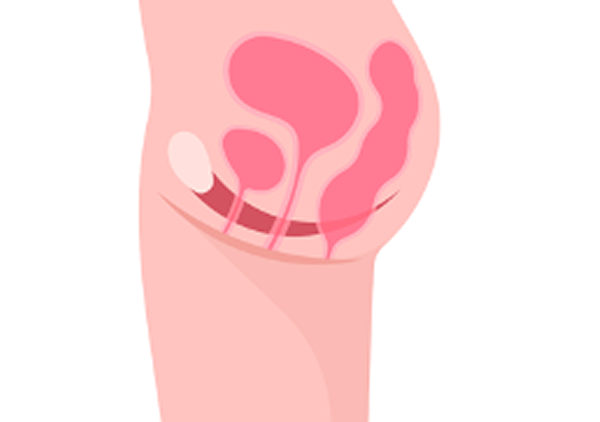
- 1 in 3 women will experience pelvic floor dysfunction at some point in their lives, often related to pregnancy, childbirth, or aging.
- Nearly 16% of men may experience symptoms of PFD, often due to prostate surgery or chronic straining.
- Approximately 25% of adults experience some form of pelvic floor disorder, with prevalence increasing with age.

Causes of Pelvic Floor Dysfunction
Several factors can contribute to the development of pelvic floor dysfunction, including:
Some examples of pertinent ICD-10 codes include:
- Pregnancy and Childbirth: Vaginal delivery can strain or injure the pelvic floor muscles, leading to dysfunction.
- Chronic Straining: Conditions such as constipation or chronic coughing can overwork and weaken the pelvic floor.
- Trauma or Surgery: Pelvic surgeries, such as hysterectomies or prostatectomies, can impact the integrity of pelvic floor muscles.
- Aging: Natural aging and hormonal changes, such as reduced estrogen levels, can weaken the muscles.
- Obesity: Excess weight places additional pressure on the pelvic floor.
- Sitting Posture and Habits: Prolonged sitting in poor postures can contribute to pelvic floor dysfunction by placing undue pressure on the muscles and tissues.
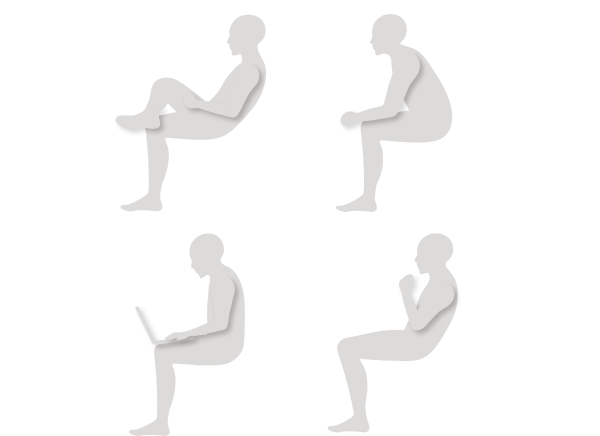
How Sitting Affects Pelvic Floor Dysfunction
When sitting in a slouched posture, the pelvis tilts rearward into what we call a “posterior pelvic tilt”.
Since many of us sit 8-10hrs /day in a posterior pelvic tilt, it’s important to understand how this can lead to pelvic floor dysfunction.
Here are some key ways that a slouched posture, or posterior pelvic tilt can cause PFD:

1.
Pelvic Alignment and Muscle Tension: A posterior pelvic tilt flattens the lower back and tucks the pelvis under, which can lead to increased tension in the pelvic floor muscles. Over time, this excessive tension may result in hypertonicity (tight pelvic floor muscles), which can cause problems such as pelvic pain, urinary frequency, or constipation.
2.
Impact on Core and Pelvic Floor Synergy: The pelvic floor works in tandem with the diaphragm, deep abdominal muscles, and lower back muscles as part of the core stabilization system. A posterior tilt may disrupt this synergy, leading to compensatory patterns that strain the pelvic floor and weaken its function.
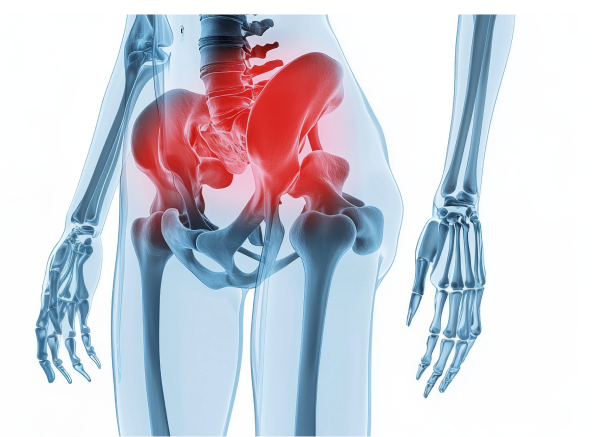
3.
Reduced Pelvic Floor Support: The altered position of the pelvis in a posterior tilt can reduce the pelvic floor’s ability to provide support for organs like the bladder, uterus, and rectum. This may increase the risk of pelvic organ prolapse or worsen symptoms if already present
4.
Breathing Dysfunction: A posterior tilt affects the alignment of the ribcage and diaphragm, leading to inefficient breathing patterns. Because the diaphragm and pelvic floor coordinate during inhalation and exhalation, improper breathing can lead to further dysfunction.
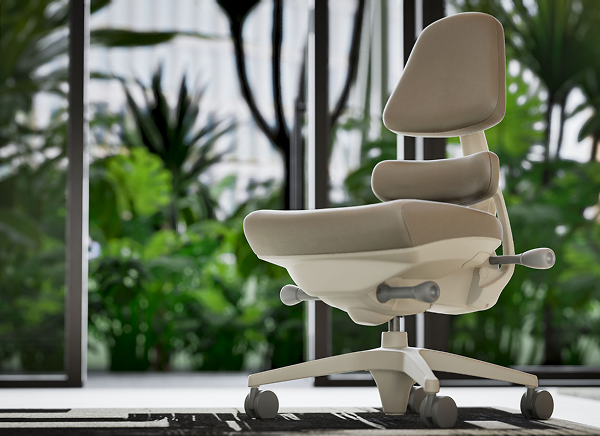
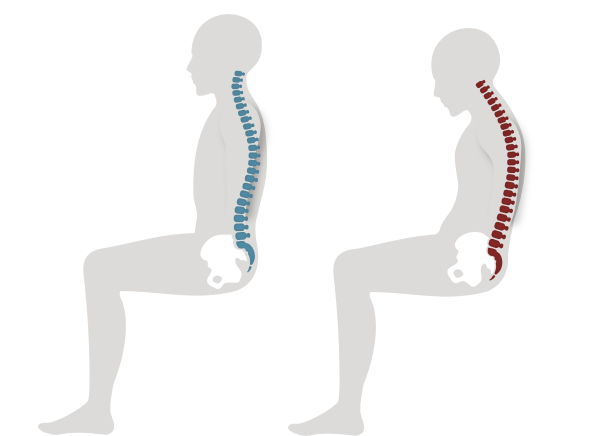
Ways to Address a Posterior Pelvic Tilt and Pelvic Floor Dysfunction:
Making conscious adjustments to your sitting habits can help reduce the strain on your pelvic floor and alleviate symptoms. Here are some tips:
1.
Sit on the Sit Bones: Ensure you are seated on your "sit bones" (ischial tuberosities) rather than slouching backward onto your tailbone. This helps align your pelvis and reduces strain on the pelvic floor.
2.
Use Pelvis Support: Choose a chair with proper pelvis support and a cushioned seat to minimize pressure on the pelvic region.
3.
Maintain Neutral Posture: Keep your spine neutral by aligning your ears, shoulders, and hips. Avoid slumping or leaning forward excessively.

4.
Take Frequent Breaks: Stand, stretch, or walk for at least 5-10 minutes every hour to promote circulation and relieve pressure.
5.
Pelvic Floor Physical Therapy: Consult a pelvic floor physical therapist who can assess muscle tone and guide relaxation or strengthening exercises.
6.
Consider Cushioning: Use a cushion designed to reduce high peak pressures to allow long term upright sitting.
7.
Adjust Your Desk Setup: Ensure your workstation allows for proper posture, with your feet flat on the floor and your screen at eye level to avoid hunching.
8.
Breathing Exercises: Incorporate diaphragmatic breathing to encourage better pelvic floor coordination.

How the Anthros Chair Can Help Mitigate or Prevent Pelvic Floor Dysfunction (PFD)
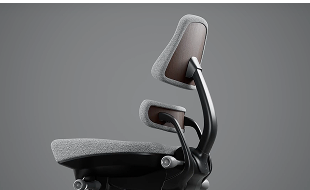
Pelvic floor dysfunction (PFD) is a common yet often misunderstood condition that affects both men and women, leading to symptoms such as urinary incontinence, pelvic pain, and lower back discomfort.
One of the key contributors to PFD is poor sitting posture, particularly a posterior pelvic tilt, which places excessive pressure on the pelvic floor muscles.
The Anthros chair is designed with ergonomic precision to promote optimal pelvic alignment, which can help mitigate and even prevent pelvic floor dysfunction. Here's how:

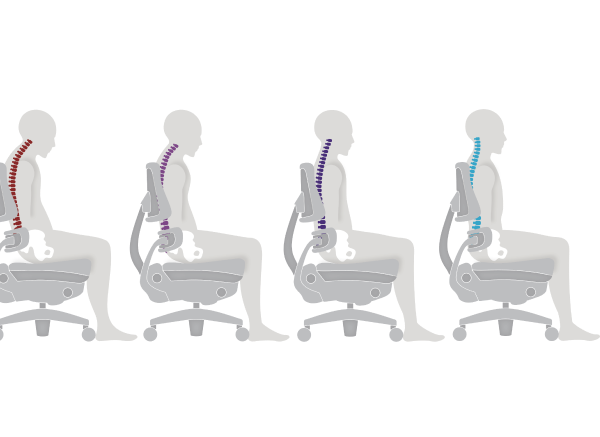
1.
Pelvic Alignment and Reduced Muscle Tension
A posterior pelvic tilt (slouching backward onto the tailbone) flattens the lower back, causing excessive tension in the pelvic floor muscles. Over time, this can lead to hypertonicity (tight pelvic floor muscles), contributing to issues such as constipation, urinary urgency, and pelvic pain.
How the Anthros Chair Helps:
Precision Posture System – The Anthros chair features a unique two-part back system, designed to support the pelvis and upper back independently. This prevents the pelvis from collapsing into a posterior tilt, reducing strain on the pelvic floor muscles. The upper back pad can then be adjusted to provide balanced support in this position.
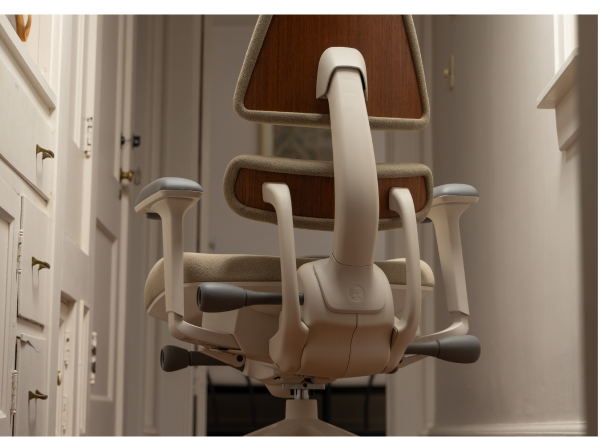
2.
Enhancing Core and Pelvic Floor Synergy
The pelvic floor, diaphragm, deep abdominal, and lower back muscles work together as a stabilization system. If the pelvis is misaligned (posterior tilt), this synergy is disrupted, causing compensatory muscle imbalances that weaken pelvic floor function.
How the Anthros Chair Helps:
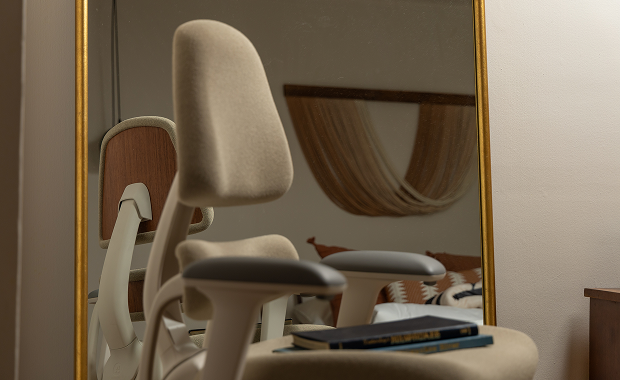
Encourages Neutral Spinal Alignment – The chair's adjustability supports a natural lumbar curve, allowing the core and pelvic floor to function in harmony rather than compensating for poor posture.
Promotes Active Sitting – The seat design allows for micro-movements, preventing prolonged static postures that can lead to pelvic floor fatigue and dysfunction.

3.
Pressure Relief and Pelvic Floor Support
Sitting in a poorly designed chair can create high-pressure points on the pelvic floor and perineum, which may contribute to discomfort, numbness, and even pelvic organ prolapse over time.
How the Anthros Chair Helps:
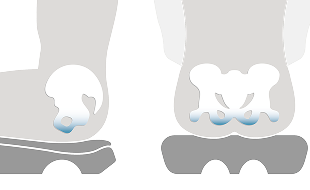
Patented Pressure-Relieving Cutouts – The seat of the Anthros chair includes strategic cutouts designed to offload pressure from the sit bones (ischial tuberosities) and tailbone (sacrum), preventing excess strain on the pelvic floor.
High-Density Foam Cushion – The seat is made from supportive yet cushioned material, allowing for long-term comfort without excessive compression of the pelvic area.
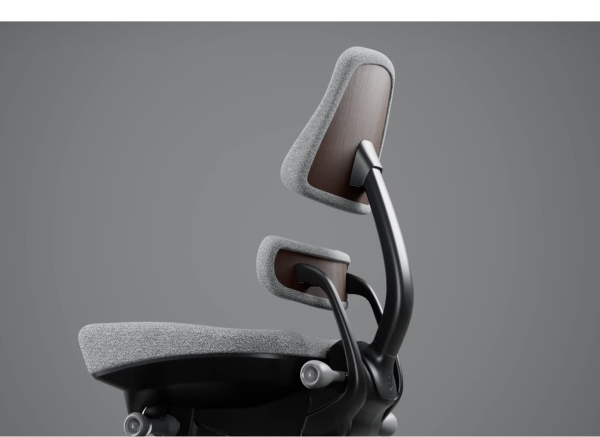
4.
Improving Breathing and Diaphragmatic Function
A posterior pelvic tilt affects the position of the ribcage and diaphragm, leading to inefficient breathing. Since the diaphragm and pelvic floor coordinate during inhalation and exhalation, poor breathing mechanics can worsen pelvic floor dysfunction.
How the Anthros Chair Helps:
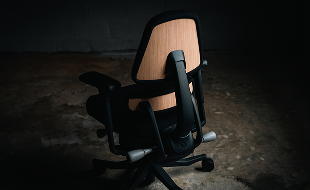
Supports an Open Chest Position – The ergonomic design maintains proper spinal posture, allowing the diaphragm to function without restriction.
Encourages Diaphragmatic Breathing – Sitting with a neutral pelvis supports better breathing mechanics, which can reduce excessive pelvic floor tension and improve function.
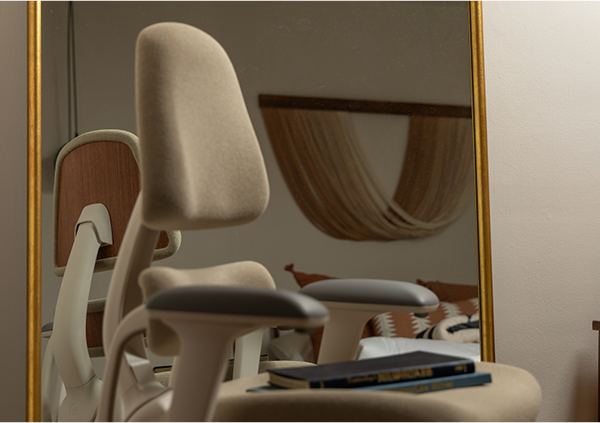
5.
Preventing Prolonged Sitting Risks
Sitting for extended periods can increase pelvic floor pressure, leading to muscle tightness and dysfunction. Experts recommend frequent movement and posture adjustments to maintain pelvic health.
How the Anthros Chair Helps:
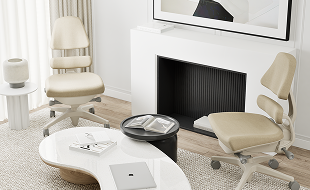
Encourages Postural Variation – The highly adjustable design allows users to switch between different postures, preventing static sitting patterns that contribute to PFD.
Works with Sit-Stand Setups – The chair's ergonomic design makes it easy to transition between sitting and standing, reducing prolonged pelvic floor strain.

Supporting Pelvic Floor Health with Anthros
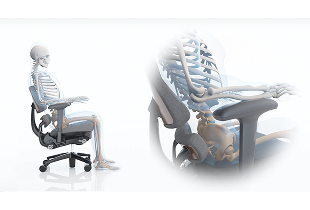
Maintaining a neutral pelvis and spine while sitting is crucial for pelvic floor health. The Anthros chair provides:
how anthros helps:
✔ Targeted pelvic support to prevent posterior pelvic tilt
✔ Pressure-relieving seat design to reduce strain on the pelvic floor
✔ Encouragement of active sitting to promote circulation and muscle function
✔ Optimized spinal alignment to support core and pelvic floor synergy
By choosing a chair designed with pelvic health in mind, you can take proactive steps to prevent and mitigate pelvic floor dysfunction, improving overall comfort, function, and well-being.
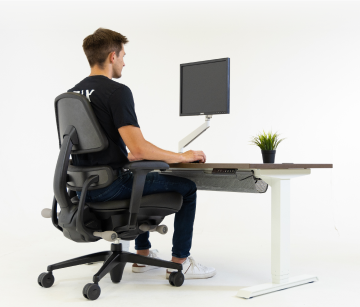

Join the Anthros family
Sign up to get special offers, the latest videos, new, + more!
By signing up, I agree with the data protection policy of Anthros
Info
Join our email list
Sign up to get special offers, the latest videos, news, + more.




